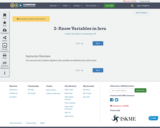
Our second set of videos explains how variable are defined and used in Java
- Subject:
- Computer Science
- Material Type:
- Full Course
- Author:
- Saeid Samadidana
- Date Added:
- 08/29/2022

Our second set of videos explains how variable are defined and used in Java
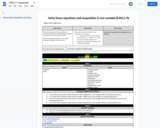
Solve linear equations and inequalities in one variable.
b. Solve linear equations and inequalities with rational number coefficients, including equations and inequalities whose solutions require expanding expressions using the distributive property and combining like terms. (guarantee limited to equations)

Students work with the concept of equality and balance to solve algebraic equations.
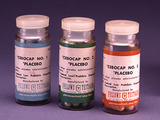
By the end of this section, you will be able to:Explain what a correlation coefficient tells us about the relationship between variablesRecognize that correlation does not indicate a cause-and-effect relationship between variablesDiscuss our tendency to look for relationships between variables that do not really existExplain random sampling and assignment of participants into experimental and control groupsDiscuss how experimenter or participant bias could affect the results of an experimentIdentify independent and dependent variables
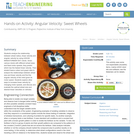
Students analyze the relationship between wheel radius, linear velocity and angular velocity by using LEGO(TM) MINDSTORMS(TM) NXT robots. Given various robots with different wheel sizes and fixed motor speeds, they predict which has the fastest linear velocity. Then student teams collect and graph data to analyze the relationships between wheel size and linear velocity and find the angular velocity of the robot given its motor speed. Students explore other ways to increase linear velocity by changing motor speeds, and discuss and evaluate the optimal wheel size and desired linear velocities on vehicles.

In this lesson, students are introduced to audio engineers. They discover in what type of an environment audio engineers work and exactly what they do on a day-to-day basis. Students come to realize that audio engineers help produce their favorite music and movies.
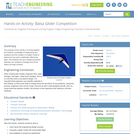
The purpose of this activity is to bring together the students' knowledge of engineering and airplanes and the creation of a glider model to determine how each modification affects the flight. The students will use a design procedure whereby one variable is changed and all the others are kept constant.
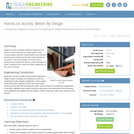
Students use the scientific method to determine the effect of control surfaces on a paper glider. They construct paper airplanes (model gliders) and test their performance to determine the base characteristics of the planes. Then they change one of the control surfaces and compare the results to their base glider in order to determine the cause and effect relationship of the control surfaces.

Biology is designed for multi-semester biology courses for science majors. It is grounded on an evolutionary basis and includes exciting features that highlight careers in the biological sciences and everyday applications of the concepts at hand. To meet the needs of today’s instructors and students, some content has been strategically condensed while maintaining the overall scope and coverage of traditional texts for this course. Instructors can customize the book, adapting it to the approach that works best in their classroom. Biology also includes an innovative art program that incorporates critical thinking and clicker questions to help students understand—and apply—key concepts.
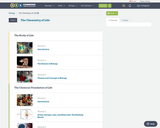

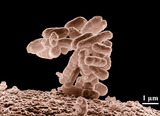
By the end of this section, you will be able to:Identify the shared characteristics of the natural sciencesSummarize the steps of the scientific methodCompare inductive reasoning with deductive reasoningDescribe the goals of basic science and applied science

By the end of this section, you will be able to:Identify the shared characteristics of the natural sciencesSummarize the steps of the scientific methodCompare inductive reasoning with deductive reasoningDescribe the goals of basic science and applied science
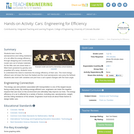
Students learn how the aerodynamics and rolling resistance of a car affect its energy efficiency through designing and constructing model cars out of simple materials. As the little cars are raced down a tilted track (powered by gravity) and propelled off a ramp, students come to understand the need to maximize the energy efficiency of their cars. The most energy-efficient cars roll down the track the fastest and the most aerodynamic cars jump the farthest. Students also work with variables and plot how a car's speed changes with the track angle.
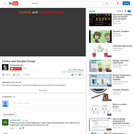
This video explains the different part of an experiment and all the components that need to be included to be a valid test. Good for vocabulary and getting a deeper understanding of how the variable group and the control group connect. Also introduces independent and dependent variables and does a nice job of illustrating how they relate to each other.

In the first part of the activity, each student chews a piece of gum until it loses its sweetness, and then leaves the gum to dry for several days before weighing it to determine the amount of mass lost. This mass corresponds to the amount of sugar in the gum, and can be compared to the amount stated on the package label. In the second part of the activity, students work in groups to design and conduct new experiments based on questions of their own choosing. These questions arise naturally from observations during the first experiment, and from students' own experiences with and knowledge of the many varieties of chewing and bubble gums available.
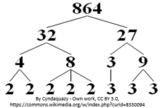
In this seminar you will learn how to factor monomials using prime factorization. You will apply prior knowledge about factoring integers. You will use the techniques learned in this seminar to factor polynomials with multiple terms as you move forward. When factoring monomials using this method, you will identify what product of prime numbers and variables will create the expression. This seminar will also begin finding the greatest common factor among multiple monomials, which is a skill that will be used moving forward on polynomials with multiple terms.StandardsCC.2.2.HS.D.3Extend the knowledge of arithmetic operations and apply to polynomialsCC.2.2.HS.D.6Extend the knowledge of rational functions to rewrite in equivalent forms.

In this seminar you will learn how to factor polynomials by looking for a common factor. You will apply the concepts of factoring integers, as well as factoring monomials and looking for the greatest common factor among terms. The techniques learned in this seminar will allow you to factor polynomials with multiple terms, and find solutions using factoring.StandardsCC.2.2.HS.D.3Extend the knowledge of arithmetic operations and apply to polynomialsCC.2.2.HS.D.6Extend the knowledge of rational functions to rewrite in equivalent forms
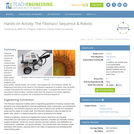
Using the LEGO® NXT robotics kit, students construct and program robots to illustrate and explore the Fibonacci sequence. Within teams, students are assigned roles: group leader, chassis builder, arm builder, chief programmer, and Fibonacci verifier. By designing a robot that moves based on the Fibonacci sequence of numbers, they can better visualize how quickly the numbers in the sequence grow. To program the robot to move according to these numbers, students break down the sequence into simple algebraic equations so that the computer can understand the Fibonacci sequence.
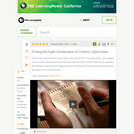
In this video segment from Cyberchase, Harry has a fixed budget for clothing, so he must figure out what combination of jackets and pants he can buy with $100.